Abstract
Two tests of heterozygosity for phenylketonuria, the phenylalanine/tyrosine ratio in the plasma after a fast and the response to an oral load of phenylalanine, have been compared in obligate heterozygotes for phenylketonuria and apparent normal homozygotes. The discriminatory ability of the tests is measured using both parametric and non-parametric methods, the correlation between them is determined, and the reproducibility of the loading test is examined. Because complete separation between the genotypes cannot be achieved by these tests, a method of interpretation which avoids possibly erroneous categoric statements and which enables the family history of a subject and his test result to be combined in a quantitative and meaningful way is described.
Full text
PDF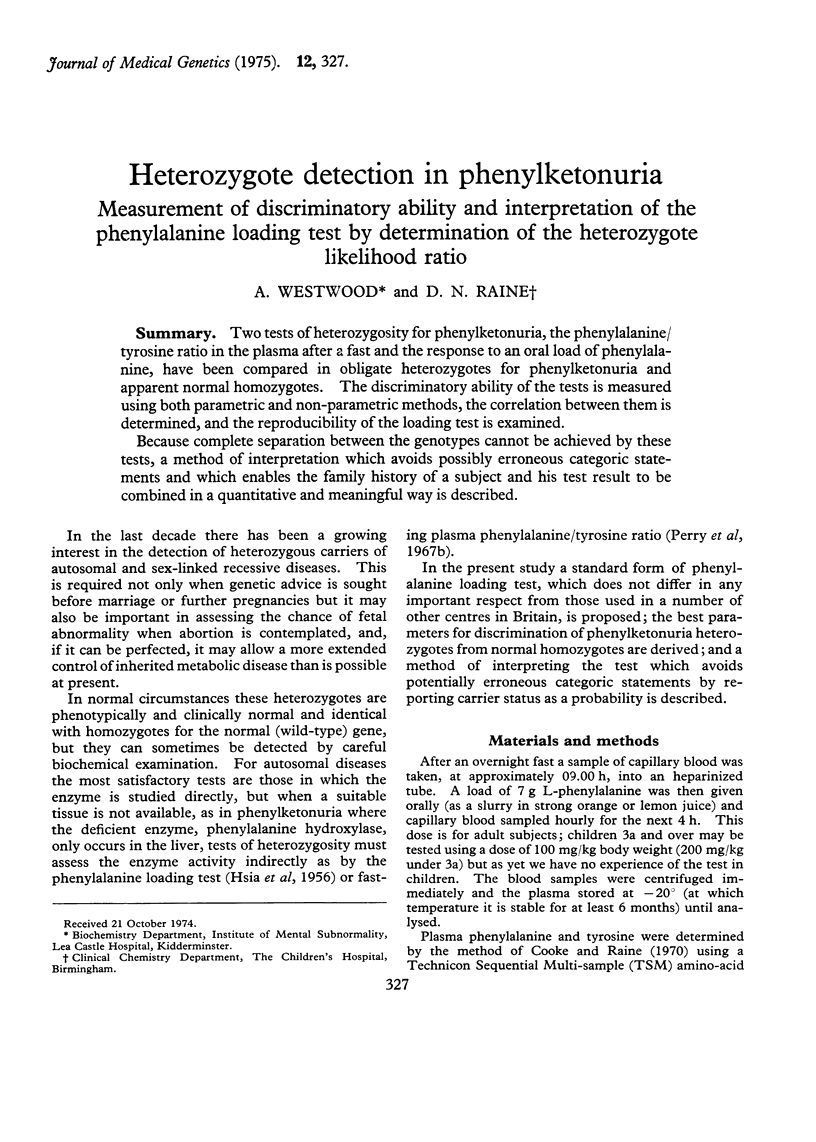
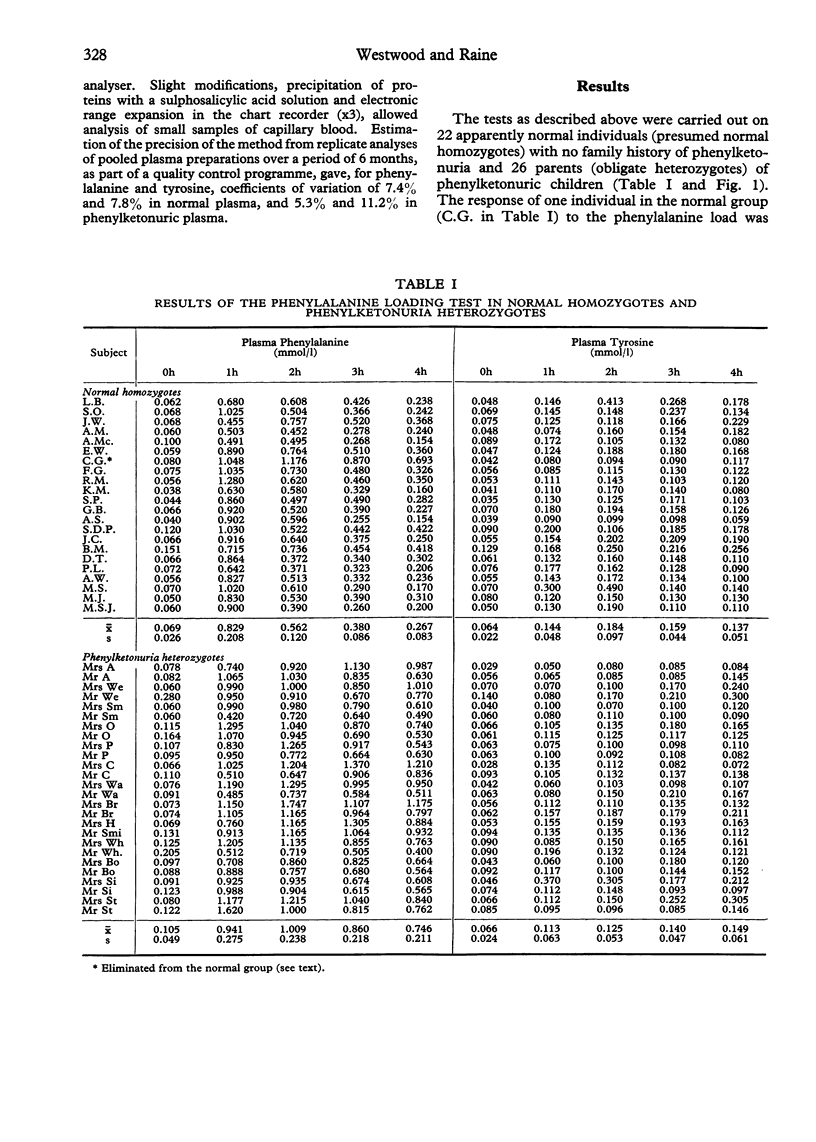
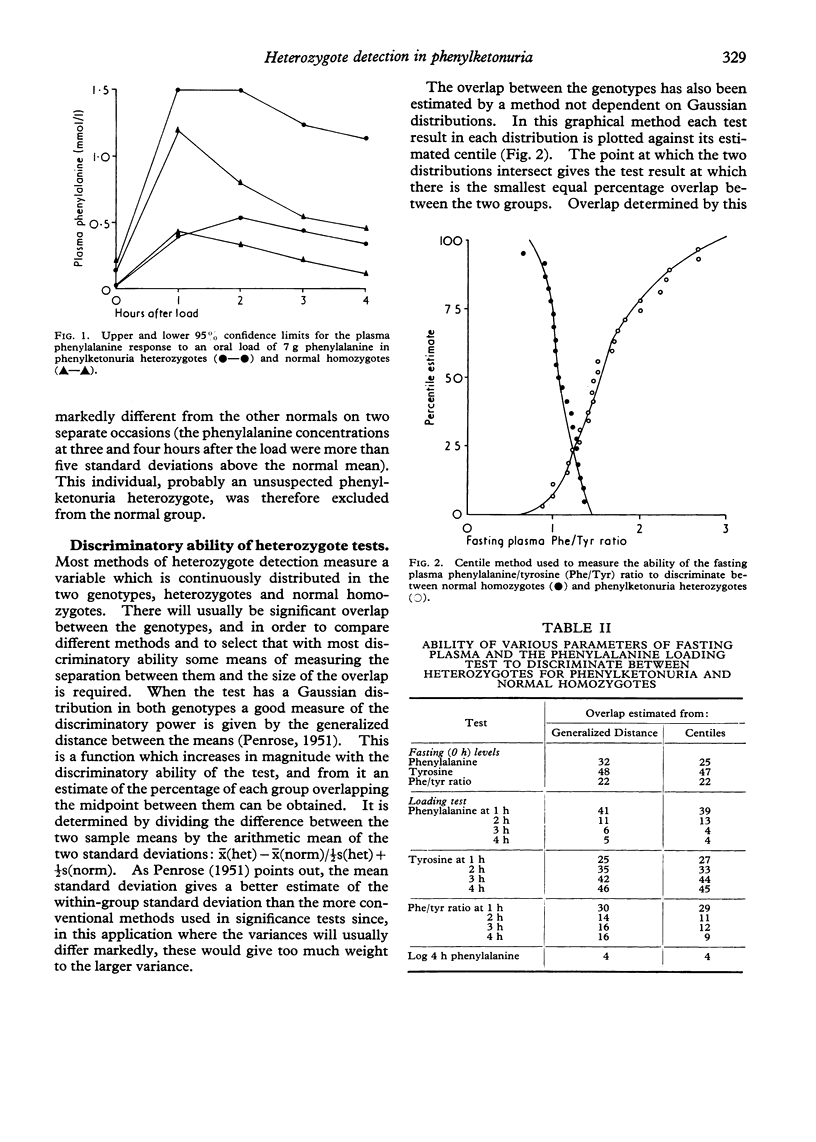
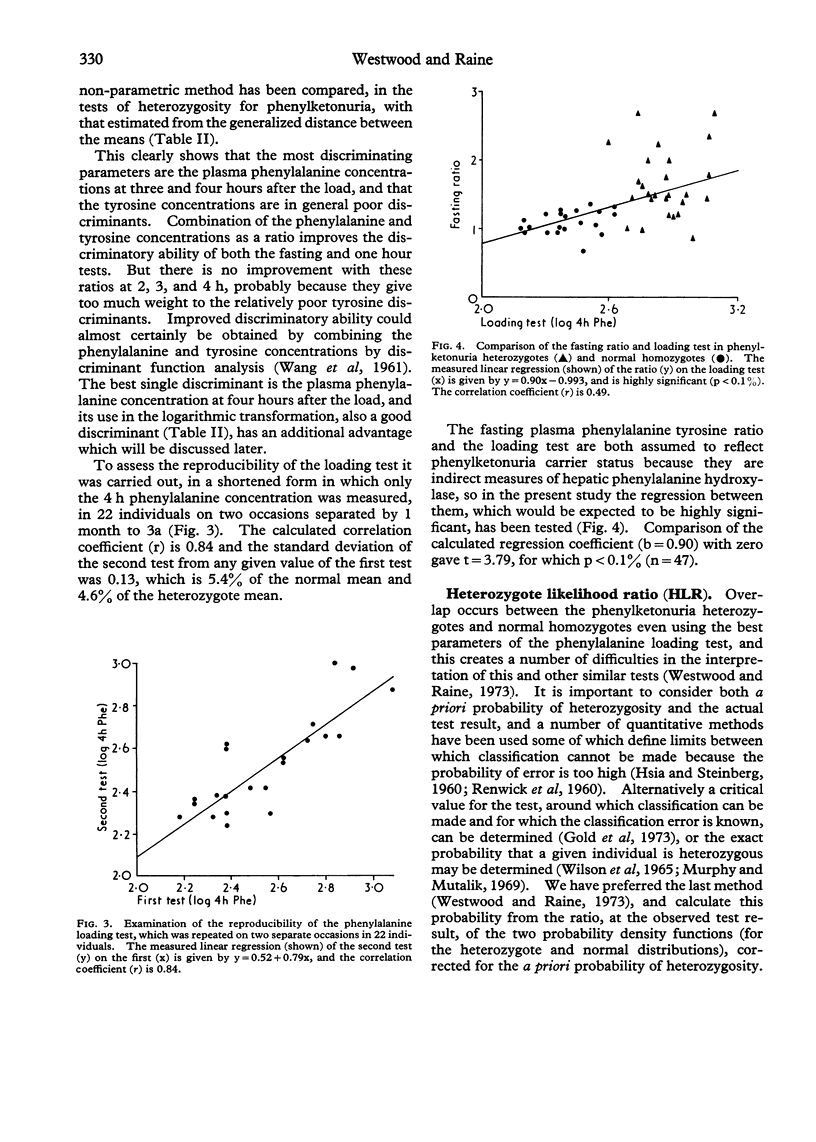
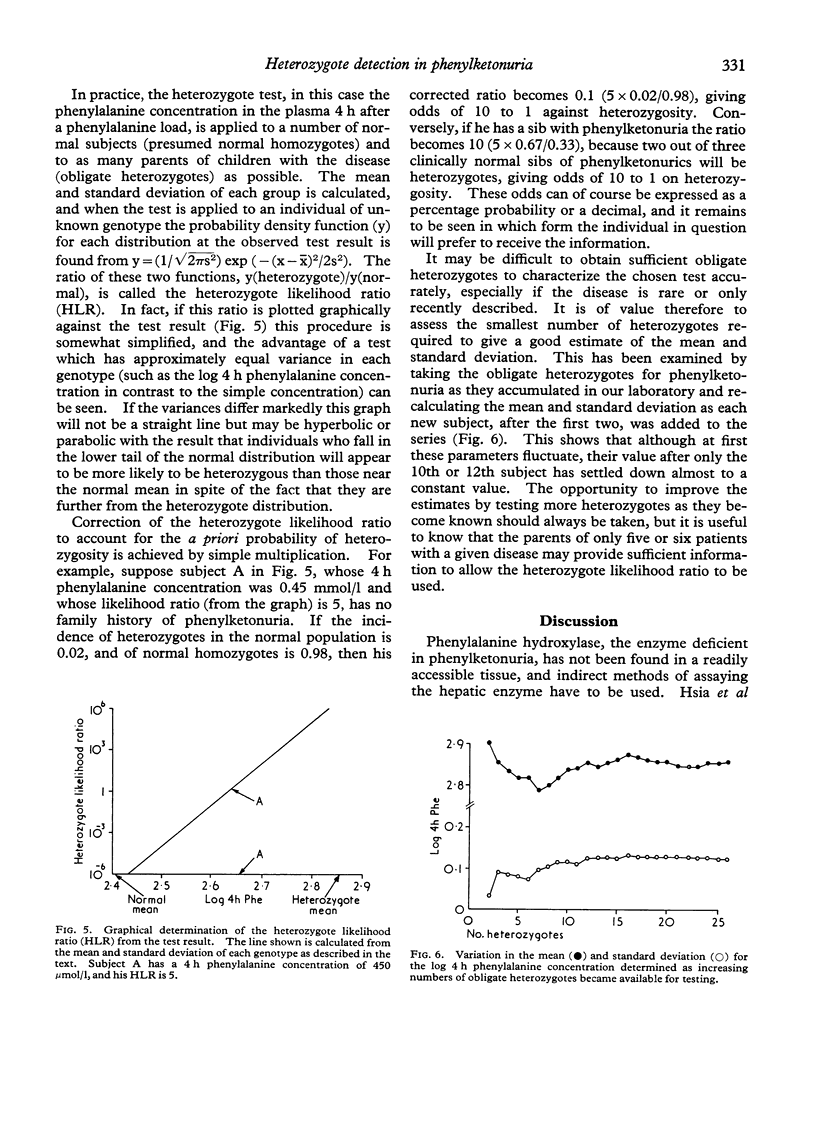
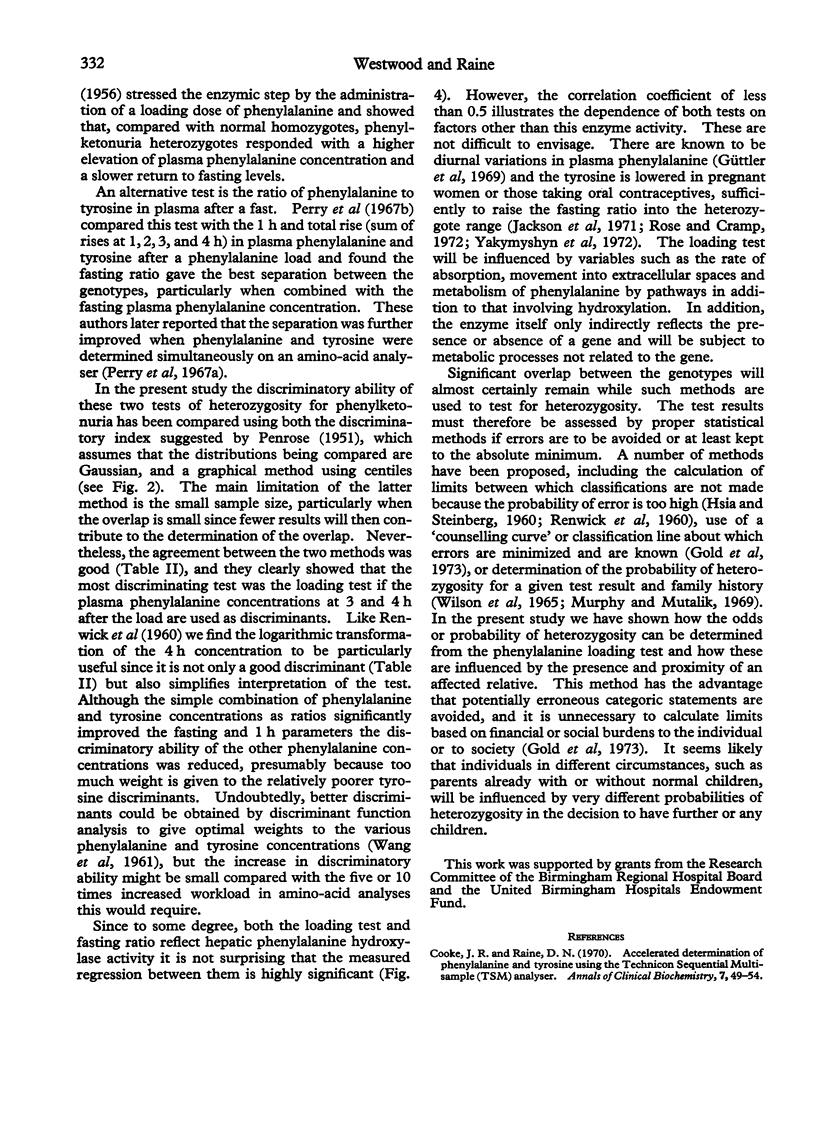
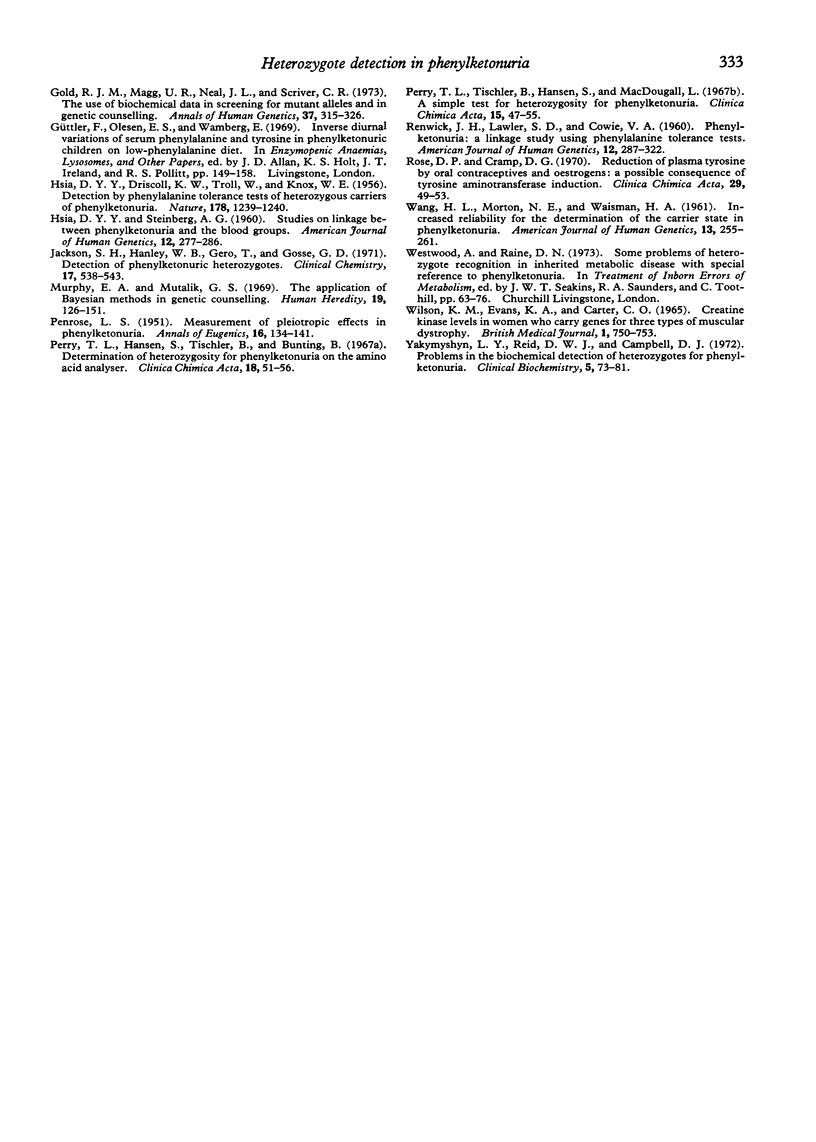
Selected References
These references are in PubMed. This may not be the complete list of references from this article.
- DRISCOLL K. W., HSIA D. Y., KNOX W. E., TROLL W. Detection by phenylalanine tolerance tests of heterozygous carriers of phenylketonuria. Nature. 1956 Dec 1;178(4544):1239–1240. doi: 10.1038/1781239a0. [DOI] [PubMed] [Google Scholar]
- Gold R. J., Maag U. R., Neal J. L., Scriver C. R. The use of biochemical data in screening for mutant alleles and in genetic counselling. Ann Hum Genet. 1974 Jan;37(3):315–326. doi: 10.1111/j.1469-1809.1974.tb01838.x. [DOI] [PubMed] [Google Scholar]
- HSIA D. Y., STEINBERG A. G. Studies on linkage between phenylketonuria and the blood groups. Am J Hum Genet. 1960 Sep;12:277–286. [PMC free article] [PubMed] [Google Scholar]
- Jackson S. H., Hanley W. B., Gero T., Gosse G. D. Detection of phenylketonuric heterozygotes. Clin Chem. 1971 Jun;17(6):538–543. [PubMed] [Google Scholar]
- PENROSE L. S. Measurement of pleiotropic effects in phenylketonuria. Ann Eugen. 1951 Sep;16(2):134–141. doi: 10.1111/j.1469-1809.1951.tb02467.x. [DOI] [PubMed] [Google Scholar]
- Perry T. L., Hansen S., Tischler B., Bunting R. Determination of heterozygosity for phenylketonuria on the amino acid analyzer. Clin Chim Acta. 1967 Oct;18(1):51–56. doi: 10.1016/0009-8981(67)90244-6. [DOI] [PubMed] [Google Scholar]
- RENWICK J. H., LAWLER S. D., COWIE V. A. Phenylketonuria: a linkage study using phenylalanine tolerance tests. Am J Hum Genet. 1960 Sep;12:287–322. [PMC free article] [PubMed] [Google Scholar]
- Rose D. P., Cramp D. G. Reduction of plasma tyrosine by oral contraceptives and oestrogens: a possible consequence of tyrosine aminotransferase induction. Clin Chim Acta. 1970 Jul;29(1):49–53. doi: 10.1016/0009-8981(70)90219-6. [DOI] [PubMed] [Google Scholar]
- WANG H. L., MORTON N. E., WAISMAN H. A. Increased reliability for the determination of the carrier state in phenylketonuria. Am J Hum Genet. 1961 Jun;13:255–261. [PMC free article] [PubMed] [Google Scholar]
- WILSON K. M., EVANS K. A., CARTER C. O. CREATINE KINASE LEVELS IN WOMEN WHO CARRY GENES FOR THREE TYPES OF MUSCULAR DYSTROPHY. Br Med J. 1965 Mar 20;1(5437):750–753. doi: 10.1136/bmj.1.5437.750. [DOI] [PMC free article] [PubMed] [Google Scholar]
- Yakymyshyn L. Y., Reid D. W., Campbell D. J. Problems in the biochemical detection of heterozygotes for phenylketonuria. Clin Biochem. 1972 Mar;5(1):73–81. doi: 10.1016/s0009-9120(72)80010-9. [DOI] [PubMed] [Google Scholar]


